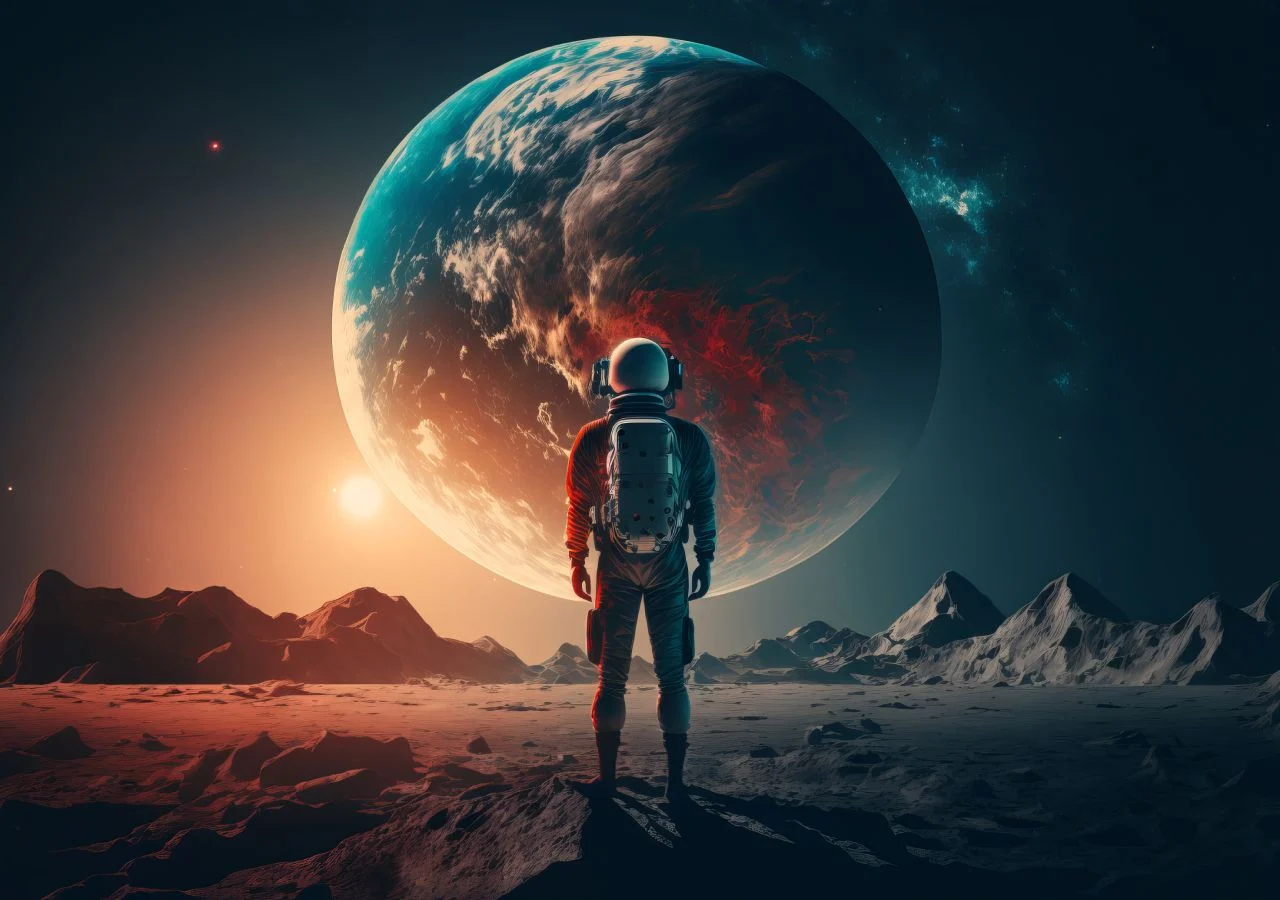
An astonishing astronomical discovery is making waves: an Earth-sized planet orbiting a red dwarf star that will shine for over 100 billion years. This new world, known as Speculo 3B, orbits a cold, Jupiter-sized star and presents a unique case in the study of exoplanets. This discovery could reshape our understanding of the potential for life in the universe.
Discovery of Speculo 3B
Located just 55 light-years away in our galactic neighborhood, Speculo 3B is similar to Earth in size but vastly different in its environment. The planet orbits an ultra-cool dwarf star, which is smaller, colder, and a thousand times dimmer than the Sun. This star could potentially shine for over 100 billion years.
What makes this discovery exceptional is that Speculo 3B lacks an atmosphere due to its close proximity to its star, exposing its rocky surface directly to space. Recently, an international team of astronomers from MIT, the University of Liège, and other institutions made this extraordinary discovery as part of the SPECULOOS project using a global network of robotic telescopes.
Characteristics of Speculo 3B
Unlike our home planet, Speculo 3B completes an orbit around its star in just 17 hours, meaning a year on this planet is shorter than a day on Earth. The intense radiation from the nearby star is about 16 times more than Earth receives from the Sun, likely vaporizing any atmosphere the planet might have once had. This leaves Speculo 3B as an exposed, blistering ball of rock, presenting an unobstructed view for studying its geology directly. Additionally, the planet is tidally locked, meaning one side always faces the star, basking in perpetual daylight while the other side remains in eternal darkness.
The Role of Ultra-Cool Dwarfs in Astronomy
Ultra-cool dwarfs, like the host star of Speculo 3B, are among the most common in our galaxy yet are less studied due to their faintness. These stars provide a unique opportunity for studying planetary systems as their longevity and stability make them prime targets for finding long-term habitable conditions. Julian de Wit, Associate Professor of Planetary Sciences at MIT, stated that with Speculo 3B, we could begin to perform what he calls exoplanetary geology. This means studying the planet’s surface properties directly, something unprecedented beyond our solar system.
The research team hypothesizes fascinating geological processes on Speculo 3B, including the potential for magma oceans, volcanic activity, and even plate tectonics in the planet’s past.
The SPECULOOS Project
The discovery of Speculo 3B was made possible through the SPECULOOS project, which stands for Search for Planets EClipsing ULtra-cOOl Stars. Operating a network of six robotic telescopes stationed across both hemispheres of our planet, this project aims to explore about 1,600 nearby ultra-cool dwarf stars. These stars’ small size makes it easier to detect planets as they transit, blocking a significant portion of the starlight, which is precisely how Speculo 3B was discovered.
Using a dedicated network of telescopes, the project has already achieved significant milestones, including the discovery of the TRAPPIST-1 system. Speculo 3B is one of their latest and most exciting findings. Initial signs of the planet were detected in 2021, but the data was inconclusive. However, in 2022, detailed observations from MIT’s SPECULOOS telescopes and subsequent analyses confirmed the presence of Speculo 3B. Benjamin Rackham, a recent research scientist at MIT, led efforts to characterize the host star using advanced spectroscopy, revealing it to be moderately active and confirming the likelihood that any atmosphere around Speculo 3B would have been eroded away.
Challenges for Habitability
Despite its relative proximity and similarity in size to Earth, Speculo 3B faces challenges that would make life as we know it hard to sustain. Positioned close to its star, the planet is subject to intense radiation, likely stripping away any atmosphere. We can only imagine standing on the surface of Speculo 3B: without an atmosphere, there would be no blue sky, no clouds—just darkness akin to the Moon’s surface. The sun, a large purplish-red star, would dominate the sky, flaring and spotted, creating a surreal and stark landscape.
Future Observations
This brave little world is now queued for further observation by the mighty James Webb Space Telescope. What secrets will it reveal about the planet’s surface or even signs of an atmosphere? The discoveries we’re making today are not just expanding our knowledge but are also setting the stage for future explorations that might one day answer the age-old question: Are we alone in the universe?
The discovery of Speculo 3B brings us one step closer to answering whether Earth-like planets around red dwarfs could be habitable. It’s a wrap on today’s exploration of an Earth-sized planet with no atmosphere. Stay tuned for more updates on this fascinating discovery.



